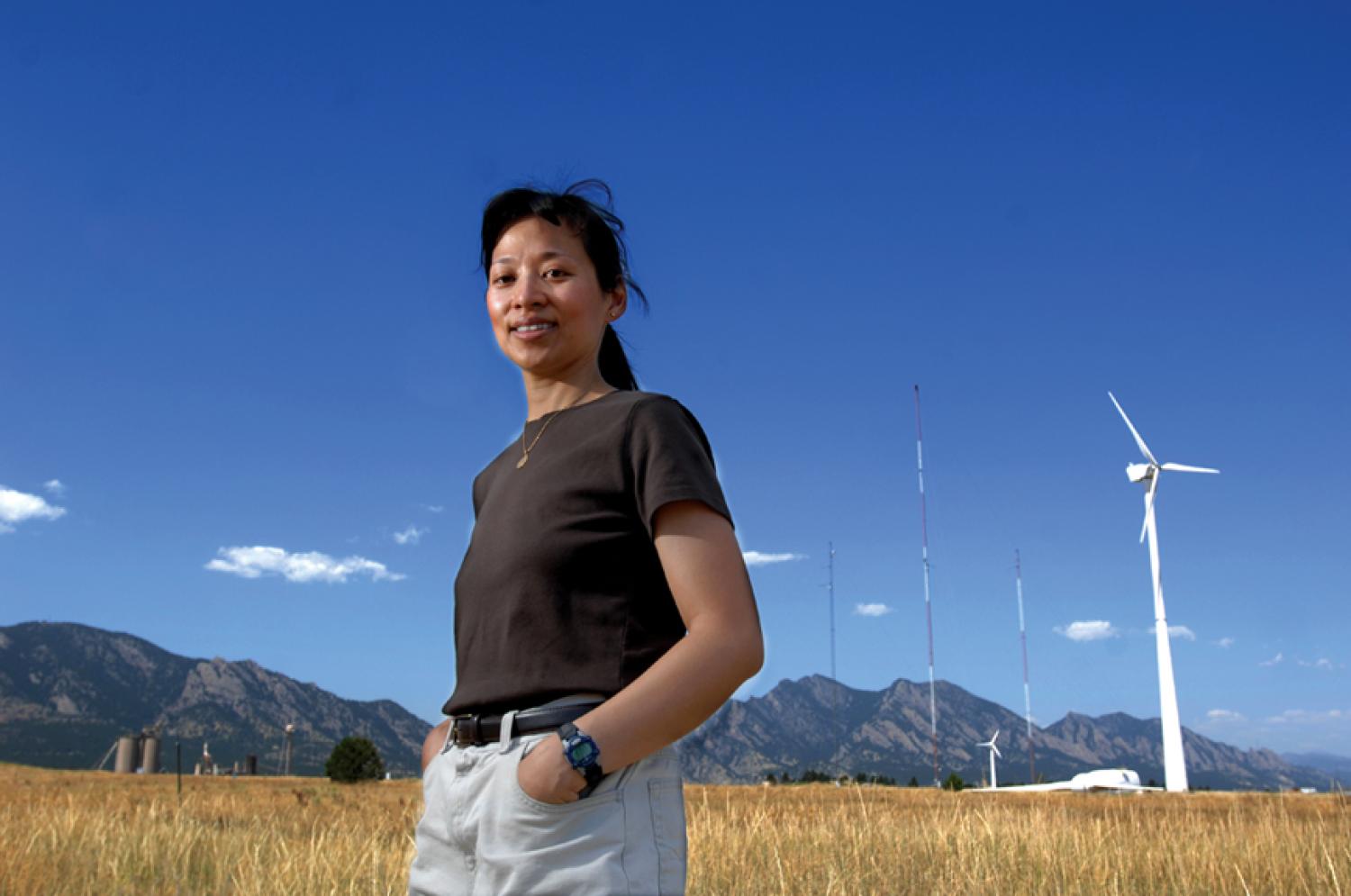
Reaping the Wind

Standing in front of NREL’s Wind Technology Center south of Boulder, professor Lucy Pao is helping develop technology that can detect shifts in wind speed to reduce excessive loads on massive turbines.
Wind power? Big deal. Really, really big deal, in fact.
Consider that scientists are now pondering construction of leviathan, 20-megawatt wind turbines some 190 meters high — basically two football fields — with swooping 125-meter rotor blades.
Today, installed wind turbines have a capacity to produce about 42,000 megawatts of power in the United States, according to the National Renewable Energy Laboratory [NREL] — enough to power some 12 million homes.
But even today’s giant turbines — already over 100 meters high at hub height, with 60-meter blades — require continuing adjustments to respond to the ever-changing wind conditions to work at maximum efficiency.
That’s where CU-Boulder professor Lucy Pao of electrical and computer engineering comes in. Pao is developing technology that can detect shifts in wind speed to reduce excessive loads on
massive turbines.
“If we know the wind speeds that are going to hit [the blades] a couple seconds from now, we can start to use better control to reduce loads on the turbine,” Pao says. “If we can see a gust coming and anticipate turbulent conditions, we can start pitching the blades,” thereby reducing loads, stress and ultimately, the cost of maintenance.
Each turbine is “rated” to generate a certain amount of power. At insufficient wind speed, the goal is to maximize power capture. At very high wind speeds, the goal is to regulate power capture and reduce stress on the turbine to decrease wear and tear. By changing the pitch or angle of the blades in response to changing wind conditions, excessive turbine loads can
be alleviated.
Up until now, however, turbines have been able to estimate wind speed only when it reaches the blades. Pao’s team is working with “lidar” — like radar, but with light — to detect changes in wind speed 30 to 200 meters in front of the rotors, allowing for anticipatory pitch changes.
Her work is important for the country’s energy needs and economy. Wind energy is one of the fastest growing sources of new U.S. manufacturing jobs with more than 400 American plants. And today’s wind farms produce enough electricity to power all of Virginia, Oklahoma or Tennessee, according to the American Wind Energy Association.
To maximize power capture on these wind farms, Pao also is working to coordinate control among turbines.
“The typical approach is to have each turbine be as greedy as possible,” capturing as much wind as available, she says. “But . . . if the front row is as greedy as possible, it’s taking too much energy out of the wind, and there’s not enough for the wind turbines in the rear rows.”
Photo courtesy Glenn Asakawa

